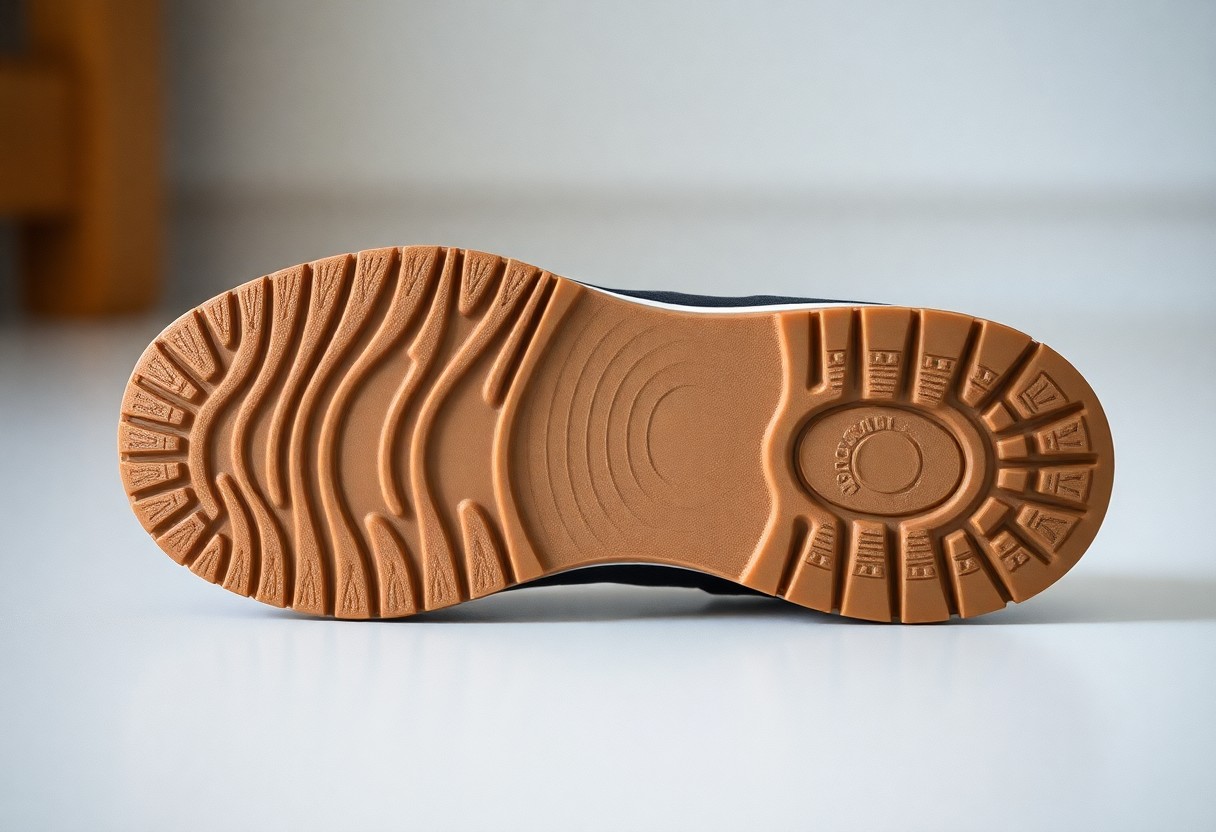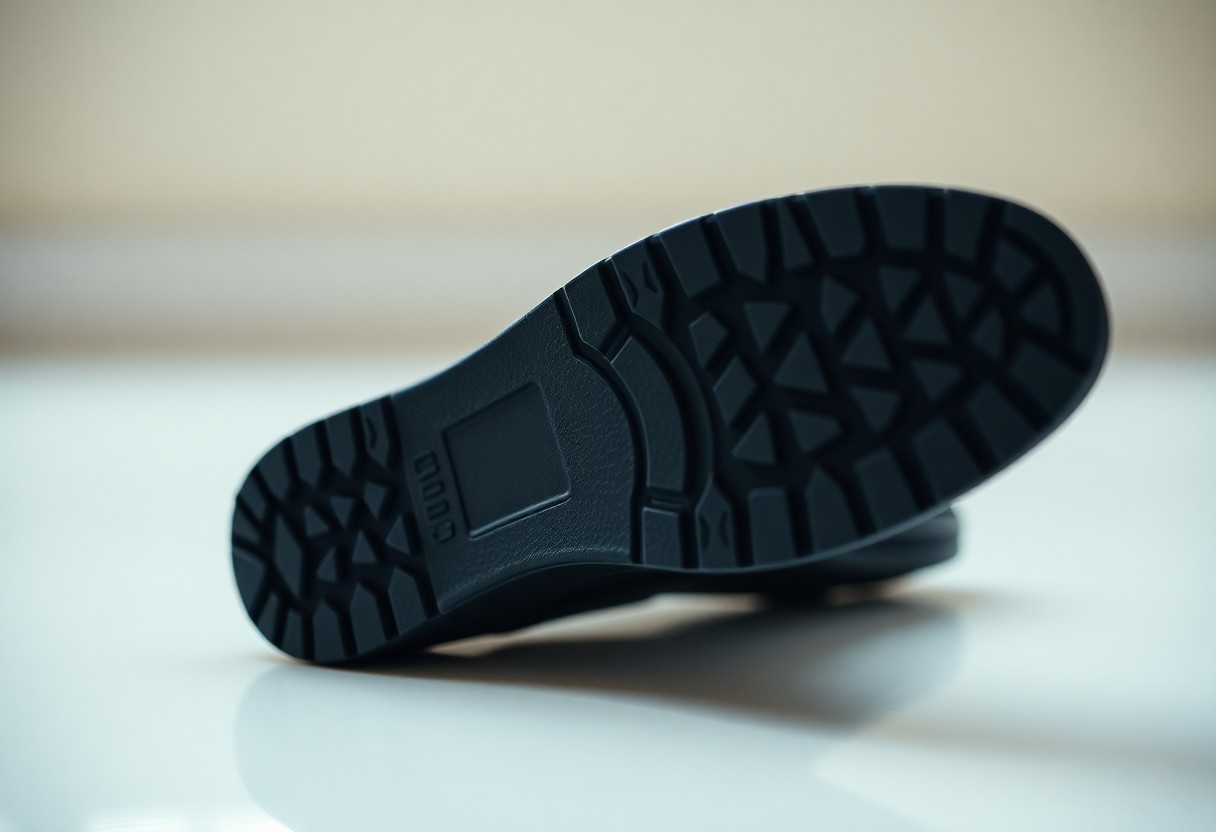There’s a simple yet effective way to ensure the longevity of your gym or court floors by choosing the right footwear. Non-marking shoes feature specialized rubber soles that won’t leave unsightly marks or scuffs on surfaces, protecting your investments. To identify them, check for the label or logo indicating “non-marking” and evaluate the sole’s color and texture—typically light-colored and smooth—are good indicators. By ensuring you wear these shoes, you not only maintain the aesthetics of the floor but also enhance your performance during activities.
Table of Contents
Key Takeaways:
- Check the Outsole: Look for soft, rubber outsoles that are specifically designed to prevent marking surfaces.
- Look for Labels: Identify non-marking shoes by searching for labels or descriptions on the packaging or shoe itself that indicate they are non-marking.
- Test the Shoe: Perform a simple test by rubbing the outsole against a white surface to see if it leaves any marks.
Understanding Non-Marking Shoes
To successfully identify non-marking shoes, it is vital to understand their unique characteristics and purpose. Non-marking shoes are specially designed footwear that doesn’t leave scuff marks on floors, making them ideal for use in indoor settings such as gyms, courts, and dance studios. By ensuring your shoes do not damage surfaces, you can help maintain the aesthetic and safety of these environments.
Definition and Purpose
The primary purpose of non-marking shoes is to provide grip and traction without damaging the flooring surfaces. These shoes are typically made with specialized rubber outsoles that are less abrasive than traditional shoe materials, ensuring you can perform at your best without affecting the environment around you.
Common Applications
For optimal performance in various settings, non-marking shoes are commonly used in recreational sports, fitness activities, and workplace environments where floor damage is a concern. This includes activities such as basketball, volleyball, dance, and even within industrial areas like hospitals or classrooms.
Common applications of non-marking shoes span diverse activities. They are widely employed in sports facilities, gym classes, and fitness studios, where you need superior traction without compromising the floors. Additionally, these shoes are integral in educational settings, protecting expensive gym flooring or polished wood surfaces. You will also find them beneficial in workplaces, particularly in facilities like hospitals or laboratories where floor cleanliness and integrity are vital. By choosing non-marking footwear, you contribute positively to your environment while ensuring your own safety.

How to Identify Non-Marking Shoes
It is imperative to ensure that the shoes you choose are non-marking, especially for indoor environments. Look for specific features such as the type of material and tread pattern on the soles. Non-marking shoes often have a softer, rubber-like material that won’t scuff floors. Pay attention to the product labels and descriptions that explicitly state “non-marking.”
Visual Inspection Tips
Inspection of your shoes can be simplified with a few visual cues. Keep an eye out for:
- Rubber soles that are softer and more flexible
- Lack of color pigments which can transfer onto surfaces
- Patterned tread that minimizes friction
After checking these factors, you can feel more confident in your selection.
Testing Techniques
Shoes that claim to be non-marking can be further evaluated through practical tests. Understanding their performance involves trying them out on a small, inconspicuous area of your intended surface. Look for any signs of scuffing or marking as you walk. If the soles leave behind any marks, they are likely not suitable for indoor use. Additionally, consider conducting a rub test on a clean floor to observe how easily a potential scuff can be removed. In this way, you can confidently choose footwear that will protect your floors from damage.
Key Factors to Consider
Keep a few key factors in mind when searching for non-marking shoes. These include the material composition, rubber type and hardness, as well as the design of the shoe. Each of these elements plays a significant role in determining if the shoes will leave marks on floors or not. Additionally, consider how the shoes feel during wear to ensure comfort. After evaluating these factors, you can make an informed decision on the best non-marking shoes for your needs.
Material Composition
One important aspect of non-marking shoes is their material composition. Look for shoes made from synthetic materials like EVA or foam, as these tend to be gentler on surfaces. Additionally, a durable upper that doesn’t scuff easily is beneficial for maintaining a clean look. The choice of materials affects both the shoe’s longevity and its ability to protect floors, which is why you’ll want to prioritize those that are specifically designed for non-marking applications.
Rubber Type and Hardness
One interesting feature of non-marking shoes is their rubber type and hardness. Different rubber formulations can greatly influence the shoe’s traction and floor impact. Generally, softer rubber types provide better grip and flexibility, while harder rubbers offer more durability. Selecting the right balance ensures that your shoes perform well during activities while also safeguarding your floors. Comfort is key, so always pay attention to how the shoes feel against your feet when testing them out.
The type of rubber and its hardness are significant factors affecting performance and safety. Softer rubber is commonly preferred for indoor use, as it provides superior traction and shock absorption. On the other hand, harder rubber can be effective for outdoor surfaces but may not be suitable for delicate indoor floors. Consider shoes with a durometer rating between 50-60 for overall optimal floor protection and user comfort. Achieving the right balance between grip and durability is critical for maintaining your floors while ensuring your performance.
Popular Non-Marking Shoe Brands
For those seeking quality non-marking shoes, several brands consistently stand out in terms of performance and reliability. These brands prioritize creating footwear that not only meets safety standards but also enhances comfort and support for various activities. Investing in shoes from renowned names can help to ensure you are choosing the best options available.
Recommended Brands
To find the right non-marking shoes for your needs, consider popular brands such as Asics, Mizuno, and Adidas. These brands have proven track records in producing high-quality athletic shoes designed for indoor surfaces. Their commitment to comfort, durability, and performance makes them a go-to choice for many athletes and casual users alike.
Brand Features to Look For
Brands that specialize in non-marking shoes often incorporate specific features tailored to your requirements. Look for shoes with a flexible rubber sole that provides both grip and durability, while ensuring your indoor surfaces remain unmarked. Additionally, shoes with breathability and cushioned support are crucial for maximizing comfort and reducing fatigue during use.
Recommended brands typically provide high-quality materials that enhance performance and longevity. Features such as moisture-wicking linings and impact-absorbing midsoles ensure your feet stay dry and comfortable, while the non-marking outsole protects indoor courts. Pay attention to the shoe’s fit; a snug but comfortable fit will enhance stability and support, making your experience safer and more enjoyable.

Maintenance Tips for Non-Marking Shoes
After investing in a pair of non-marking shoes, it’s vital to keep them in optimal condition. To maintain their quality and performance, consider the following tips:
- Regularly inspect for wear and tear.
- Keep them clean and free of debris.
- Store them properly to maintain shape.
Knowing how to effectively care for your shoes will extend their lifespan and maintain their non-marking properties.
Cleaning and Care
On a regular basis, you should clean your non-marking shoes to remove dirt and stains. Use a soft brush or cloth to gently wipe away debris, and opt for mild soap solutions if necessary. This not only keeps your shoes looking fresh but also helps maintain the integrity of the non-marking material.
Storage Practices
Some best practices for storing your non-marking shoes include keeping them in a cool, dry place away from direct sunlight. This prevents any potential damage from heat and moisture, which could affect the performance of the shoes. Additionally, using shoe racks or boxes keeps them organized and helps maintain their shape.
This is important because poor storage conditions can lead to unintended damage, such as warping or breaking down of materials. By utilizing shoe trees or stuffing them lightly with paper, you ensure that your non-marking shoes retain their original form. Always avoid placing heavy items on top, as this can create indentations that affect performance. Keeping your shoes in a breathable environment will help preserve their quality.
Common Misconceptions About Non-Marking Shoes
Once again, many people wrongly assume that non-marking shoes are only necessary for specific sports or activities. They think that any shoe labeled as non-marking will work universally, which can lead to using inappropriate footwear on various surfaces. The truth is that non-marking does not equate to quality or performance; it specifically refers to the shoe’s sole and its potential to leave marks on floors. Understanding these nuances is vital for making informed decisions about your footwear.
Myths vs. Facts
If you’ve heard that all athletic shoes are non-marking, it’s important to clear that up. Not every pair of shoes labeled as “athletic” possesses non-marking soles. Many brands produce various shoes designed for different surfaces, and it’s your responsibility to check the specifications to ensure they meet your needs.
Clarifying Misunderstandings
One of the biggest misunderstandings is that non-marking shoes lack durability or performance. In reality, these shoes can be just as robust and effective as other footwear options.
With proper research, you can find non-marking shoes that not only protect your floors but also provide exceptional comfort and performance. Many high-quality brands offer shoes designed for various activities, ensuring that you do not have to compromise on either style or function. Being well-informed can help you select shoes that meet both your activity requirements and surface compatibility, keeping both your performance and environment in check.
To wrap up
On the whole, identifying non-marking shoes involves checking the sole for specific labels, inspecting the material for rubber properties, and testing the shoe on various surfaces. Look for shoes that explicitly mention “non-marking” in their description or labeling, and consider the type of activities you engage in. For more detailed guidance on selecting the right footwear, visit Non-Marking Soles. This knowledge will ensure your shoes meet your needs while preserving the quality of your playing surface.
Q: How can I tell if my shoes are non marking?
A: To identify non marking shoes, check for labels or icons on the outsole that indicate they are designed for that purpose. Look for shoes specifically made for indoor use, such as athletic shoes or certain types of sneakers, which are often labeled as non marking. Additionally, you can conduct a simple test: rub the sole of the shoe against a clean, light-colored surface. If no marks are left behind, the shoes are likely non marking.
Q: What materials are typically used in non marking shoes?
A: Non marking shoes are usually made from rubber or other synthetic materials that are formulated to ensure they do not leave scuff marks on floors. The outsole is often designed to be soft yet durable, preventing any abrasion that could cause damage to surface areas. Look for shoes that specify their outsoles as “non marking” or “scuff-free,” as these materials are engineered for that specific purpose.
Q: Are all athletic shoes non marking?
A: Not all athletic shoes are non marking. While many brands offer non marking options, it is crucial to check the specifications of each shoe model. Some athletic shoes designed for outdoor use may have harder rubber soles that can leave marks on indoor surfaces. Always look for the manufacturer’s guidelines or labels when purchasing athletic footwear for indoor activities to ensure they qualify as non marking.